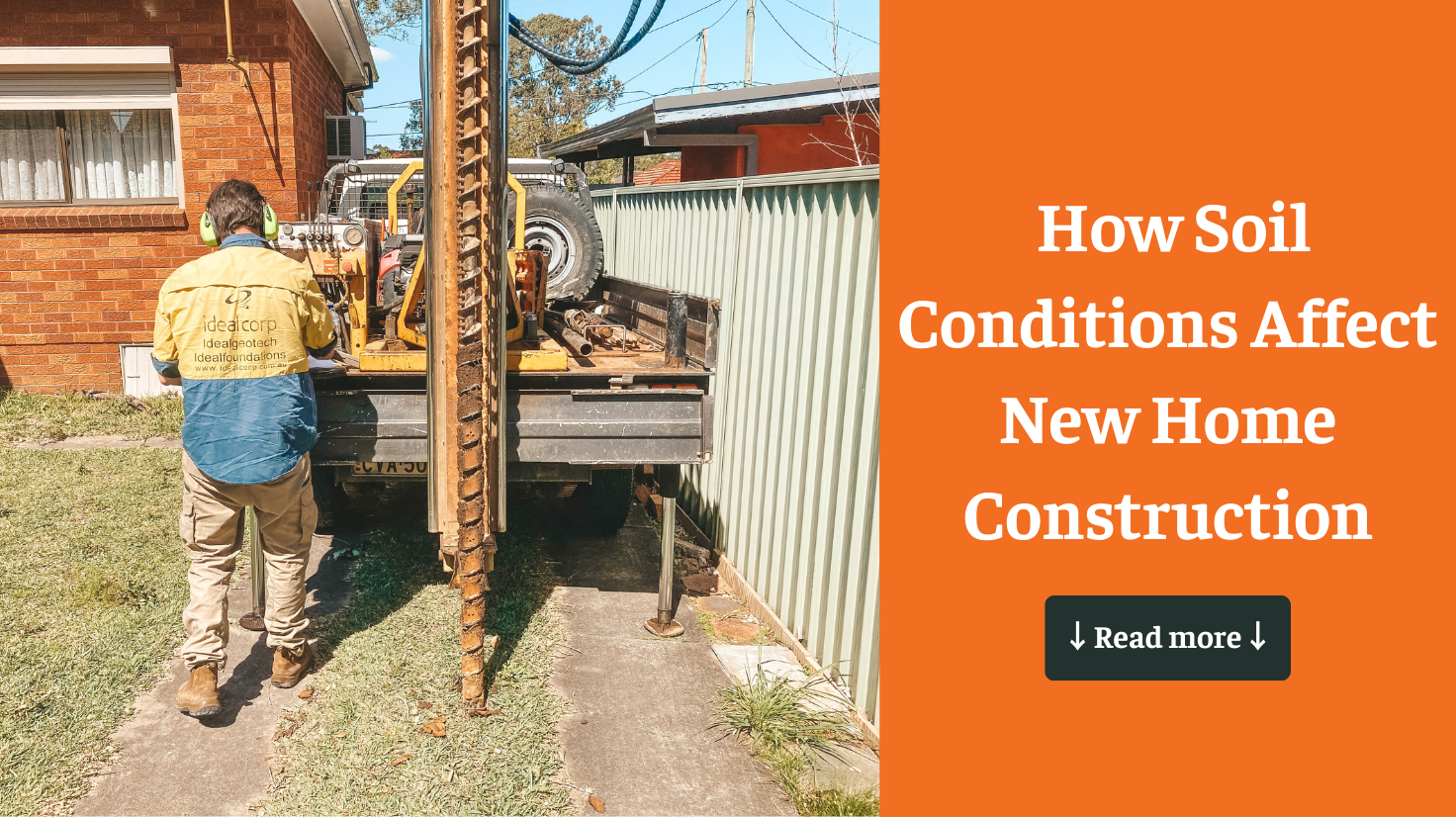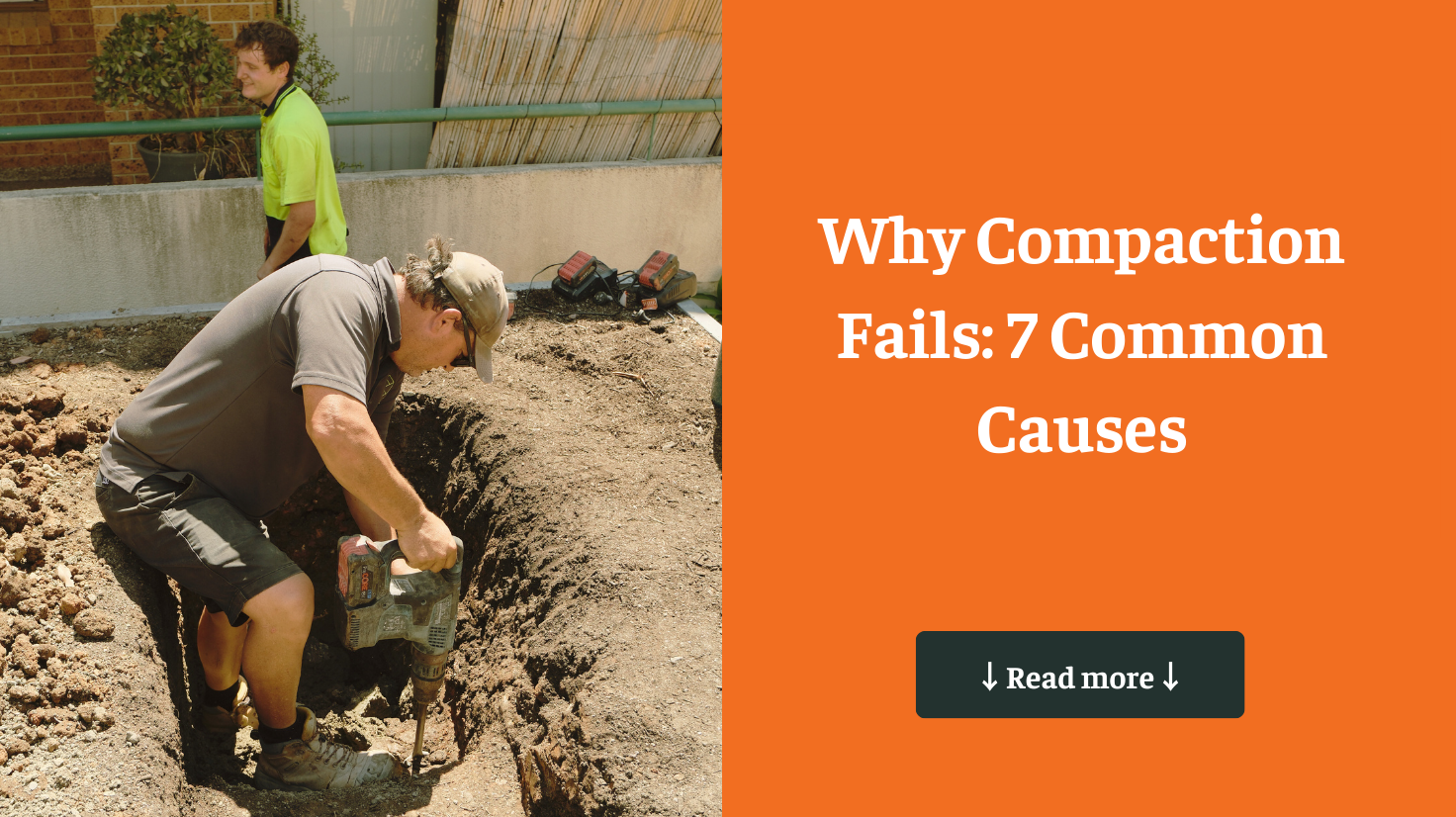Soil and site conditions are critical factors to consider when planning, building, and maintaining a new home. A soil test for new home construction is essential as the type of soil on your building site significantly influences the foundation design and can impact the overall cost of construction.
1. Why Are Soil Conditions Important?
Understanding the type of soil on your building site is crucial for structural engineers. They use the results from a soil test for new home construction to design foundations that can properly support the home. Foundations transfer the weight of the structure and other forces to the ground. If the soil is loose, uneven, or prone to shifting, it may not provide adequate support. Additionally, reactive soils, which swell and contract with moisture changes, pose further challenges.
Without a correctly designed foundation, the home may experience excessive movement, cracking, or even structural failure. These problems become more evident during drought conditions, where reactive soils pose particular risks. Thus, ensuring well-designed foundations tailored to specific soil types based on the soil test for new building foundation is essential.
2. Soil Types
Australian Standard 2870 categorises soils into various classifications based on their reactivity:
- S – Slightly reactive clay sites that may experience only slight ground movement from moisture changes.
- M – Moderately reactive clay or silt sites that may experience moderate ground movement from moisture changes.
- H1 – Highly reactive clay sites that may experience significant ground movement from moisture changes.
- H2 – Very highly reactive clay sites that may experience very high ground movement from moisture changes.
- E – Extremely reactive sites that may experience extreme ground movement from moisture changes.
- P – Problem soils, which include sites with inadequate bearing strength or ground movement significantly influenced by factors other than reactive soil movements. P sites might include soft or unstable foundations such as soft clay, silt, or loose sands, landslip areas, mine subsidence zones, collapsing soils, and sites subject to erosion.
3. How Are Soil Conditions Tested?
To assess soil conditions, engineers employ various methods that measure the soil’s strength and the thickness of subsurface layers. One widely used method for residential construction is Dynamic Cone Penetration (DCP) testing.
During this test, a metal cone is driven into the ground using a 9kg weight dropped from a consistent height. Engineers then record the number of blows it takes for the cone to reach a specific depth. Fewer blows indicate weaker soil at that level. This process continues at deeper levels to create a comprehensive picture of the subsurface soil layers. With this information, engineers can design foundations that suit the specific soil conditions.
4. How Are Foundations Designed for Different Soil Types?
A structural engineer will use the soil classification to determine the appropriate depth and type of foundation, as well as the grade of steel reinforcing needed.
For more challenging sites, screw piles are often a superior alternative to traditional concrete piers. Screw piles provide additional support by transferring loads to stable ground beneath any loose or inconsistent soil near the surface. They are particularly effective in ensuring the strength and longevity of the foundation. To learn more about screw piles and how they can benefit your project, visit Ideal Foundations.
5. Financial Impact of Soil Conditions
Soil conditions can increase the cost of building a new home. For instance, if the soil test for new home construction reveals that the soil is more reactive or requires additional support such as screw piles, additional costs may arise. These costs vary based on factors such as soil quality, home size, and the contours of the land.
At Ideal Geotech, we understand these challenges and have years of experience working in New South Wales, Queensland, and Southeast Australia. We can help you assess the financial impact early in the process. To get a cost-effective soil testing service, visit Ideal Geotech.
6. A Word of Caution
Some builders may use soil conditions as an excuse to increase costs unjustifiably. If your builder tells you that the soil on your site is poor, ask for the engineering report and don’t hesitate to ask questions. If screw piles or other special measures are recommended, ask for details such as why they are needed, the type of screw piles to be used, and how deep they must go. A trustworthy builder will transparently explain the site conditions and the necessary steps to construct a solid, compliant home.
7. Planning a New Home?
If you’re unsure about the soil conditions on your site or need expert advice, Ideal Geotech is here to help. Click on ‘Order Now‘ to schedule your soil testing or footing inspection and ensure your project starts on the right foundation.







